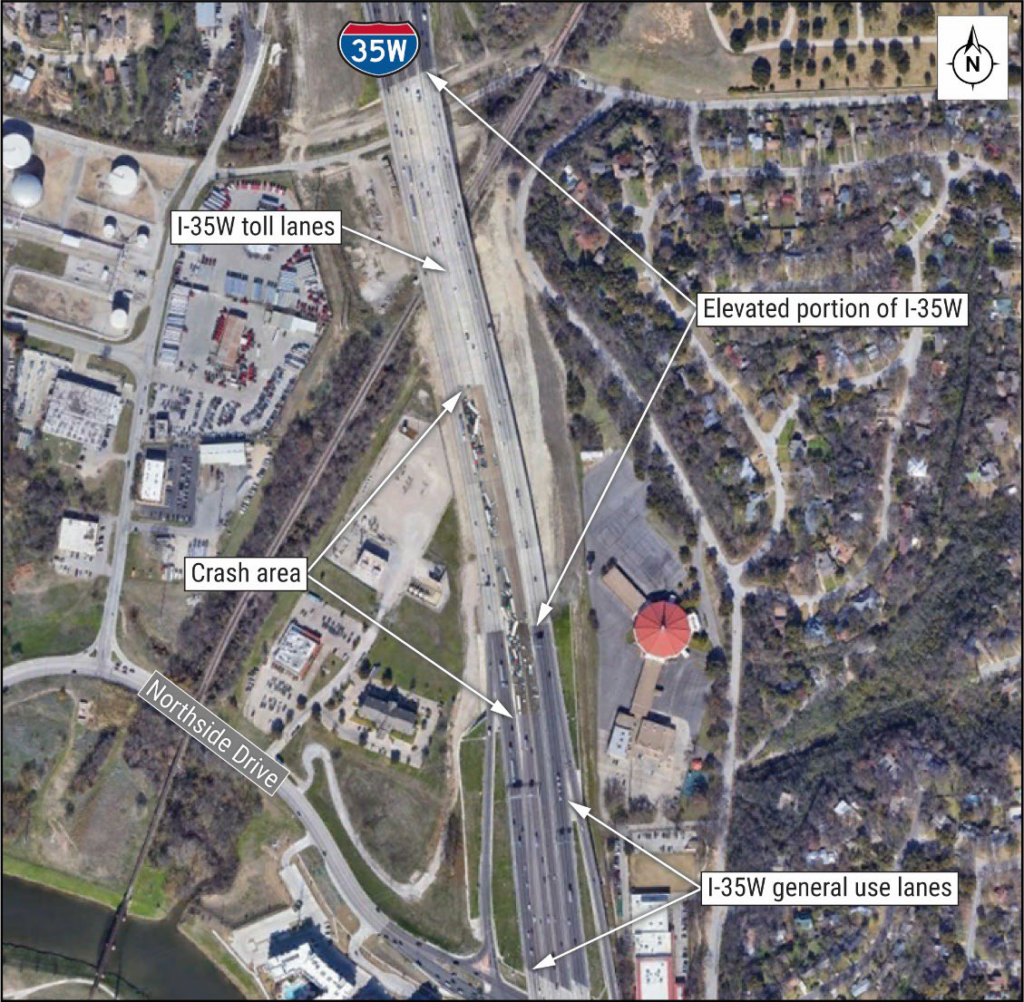It has been over two years since the infamous Fort Worth ice storm caused one of the worst multi-vehicle collisions in the history of Texas. But even in these blistering hot days, it is impossible to forget the devastation on February 11, 2021 when 133 cars, trucks, and commercial vehicles crashed. This caused six people to lose their lives and at least 65 people to be injured.
We wrote about the catastrophic collisions here:
/massive-fort-worth-collision-causes-five-deaths-and-multiple-injuries/
The National Transportation Safety Board (NTSB) investigated the crashes and released a report. It primarily blamed the company that built and monitored the tollway.
The report revealed important details about how the collisions occurred including that
- The North Tarrant Express (NTE) Mobility Partners, the consortium of companies that planned, built, and maintains the express lanes on the interstate where the crashes happened, claimed that the road had been pretreated with a salt or brine solution two days before the crashes.
- However, very little training was given to NTE employees and the agency was short-staffed.
- NTE only had three maintenance vehicles but afterward, added six vehicles and 18 weather sensors.
- The express lanes were designed with virtually no shoulder space and very few exits so oncoming vehicles had nowhere to go when dangerouis conditions happened.
- At 3:00 a.m. that morning, police responded to a vehicle crash nearby on I-35. An officer reported this information to NTE. But only parts of the highway were spot treated.
- NTE activated warning signs by 3:40 a.m. so it understood the dangerous road situation.
- Just before the crashes happened at 6:00 a.m., the average speed in the left lane was 82 MPH. Drivers were going as fast as 103 MPH. The speed limit is 75.
- First responders said they slipped and fell when they got out of their vehicles and did not see any sand on the highway.
The NTSB report recommended more training for the toll facilities, new laws to regulate speed limit signs, and more sensors to monitor roads on cold weather days.
Lawsuits asserting damages on behalf of the survivors of the deceased victims and the injured people are working their way through the courts. The negligence of the NTE, the drivers, the companies which owned the 18-wheelers that plowed into stopped cars, and the State of Texas is being scrutinized.


